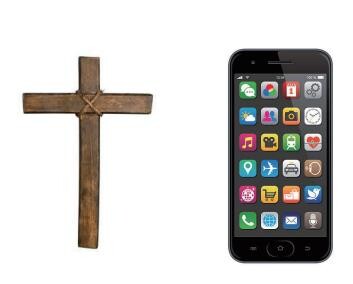*Editor’s note: K-VIBE invites experts from various K-culture sectors to share their extraordinary discovery about the Korean culture.
Chronicles of Metaverse: When the Cross Meets the Smartphone
By Noh Seok-joon (Master K-architect engineer)
 |
The concept of "ubiquitous" once captivated global discourse. With the advent of smartphones—blending the communicative utility of phones with the computational power of computers—a new era of ubiquitous computing emerged. This environment allows people to connect to networks anytime, anywhere, to access and utilize resources generated by computers.
◇ Ubiquitous Computing: A Theological Origin
The term "ubiquitous," derived from the Latin ubique ("everywhere"), initially described the omnipresence of God. In technology, it refers to the ability to compute through any device, at any place or time.
Coined by Mark Weiser in 1988, the concept had its foundations laid earlier in 1974 by MIT professor Nicholas Negroponte. He predicted that computers would integrate into everyday objects, transforming them into a pervasive network.
Interestingly, the theological roots of ubiquity—such as "omnipresence" in Christian theology—reflect a similar aspiration: constant connection with the divine. In religion, symbols like the cross or rosary have served as "ubiquitous" tools for humans to connect with God.
In today’s world, smartphones seamlessly integrate into our lives, enabling financial transactions, education, shopping, and communication. They also connect us with smart devices in our homes, embodying the very essence of ubiquitous computing.
Negroponte’s vision of distributed computing across toys, appliances, and bicycles has become a reality. With networks connecting buildings, cities, and objects, ubiquitous computing has expanded from an abstract idea into a tangible aspect of daily life.
The theological origins of ubiquity provide a fascinating lens through which to view modern technology. Just as religious symbols historically facilitated a connection with God, smartphones now serve as universal tools connecting individuals to a digital realm of infinite possibilities.
This convergence of spirituality and technology suggests that humanity's age-old desire to remain connected—whether to a divine being or a global network—continues to shape the tools we create. The smartphone, in many ways, is the modern equivalent of the cross or the rosary: a device enabling constant access, communication, and interaction.
 |
| ▲ A cross and a smartphone. (PHOTO NOT FOR SALE) (Yonhap) |
◇From Ubiquitous to the Metaverse
The concept of "ubiquitous" has evolved from theological and philosophical origins into a modern technological framework, creating an environment where "a virtual world anywhere and anytime" becomes possible.
In the Middle Ages, people believed in the omnipresence of God. They used symbols like crosses to pray, believing they could connect with the divine—a virtual world of God's presence. The cross, in this sense, served as a medium to access this spiritual realm.
Modern smartphones function similarly. Through various apps, they allow access to virtual worlds at any time or place, echoing how Christians historically connected with the divine through crosses or rosaries. Viewed through this lens, religious artifacts can be interpreted as precursors to today's digital tools—devices connecting us to virtual experiences.
Today's evolution of ubiquitous computing includes VR (Virtual Reality) and AR (Augmented Reality) technologies, enabling more vivid and immersive experiences. These tools extend the same fundamental concept: creating seamless access to interconnected virtual environments.
The transition from analog to digital ubiquity demonstrates humanity's enduring drive to create tools for connection. Crosses and rosaries have given way to smartphones and VR headsets, but the essence remains unchanged: building environments and devices to bridge worlds, whether spiritual or digital.
Now, with advancements in technology, the metaverse represents the pinnacle of this effort—a space where imagination converges with technology to create a ubiquitous virtual environment. It is not merely an extension of past innovations but a reflection of humanity's continuous endeavor to connect and explore boundless realms of possibility.
(C) Yonhap News Agency. All Rights Reserved























